How to properly plant and grow large red hybrid pepper “Ombrone”
Hybrids of sweet peppers have long been popular among gardeners and summer residents. They are distinguished by improved yields, taste characteristics, long shelf life and resistance to adverse conditions. These are the qualities that the hybrid pepper Ombrone F1 has.
What kind of pepper is this
Ombrone pepper is a hybrid of red sweet peppers.. The seed producer is the Japanese company Sakata, the hybrid is listed in the State Register of the Russian Federation.
Suitable for growing in protected and open ground. Fruits are able to set even at low temperatures.
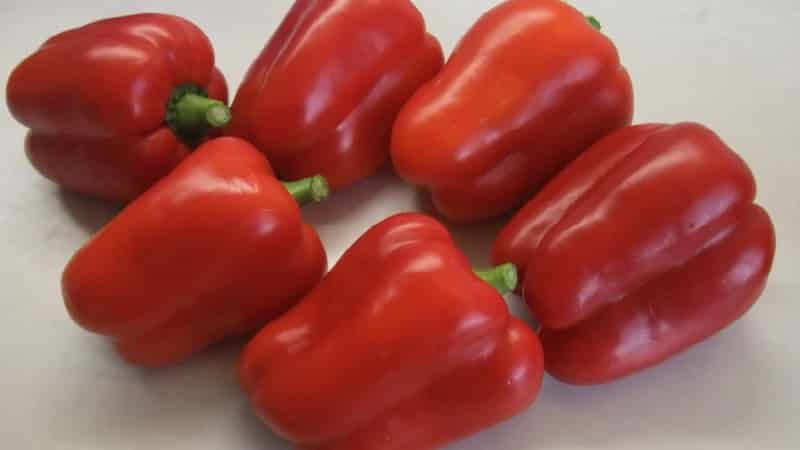
Hybrid f1
Ombrone pepper has a medium-early ripening period. It is unpretentious in care and tolerates adverse environmental factors and transportation well.
Characteristics and description
The bush is powerful, semi-spreading, from high to medium. The foliage is medium-sized, wrinkled, dark green to green in color. Ripening begins 70-75 days after planting the seedlings in the ground.
Distinctive features
Fruits more abundantly in a greenhouse than in open ground. It is distinguished by large fruits and a balanced, bright taste that is preserved even after freezing. The fruit is especially good in fresh salads and preserves.
Reference. Pepper can bear fruit throughout the season, provided that the growing technology is followed. Suitable for breeding in central Russia at low temperatures.
Fruit characteristics, yield
Pepper fruits have a cuboidal, elongated, three-four-chambered shape.. The tip is blunt, the wall thickness is 8 mm. The length of the vegetable reaches 15-18 cm, weight - 300-400 g. Peppers taste sweet, juicy, without bitterness. When the pepper ripens, it turns bright red in color.
Pepper Ombrone characterized by high yield - up to 5.5-6 kg per 1 m². Feels good in the middle zone.
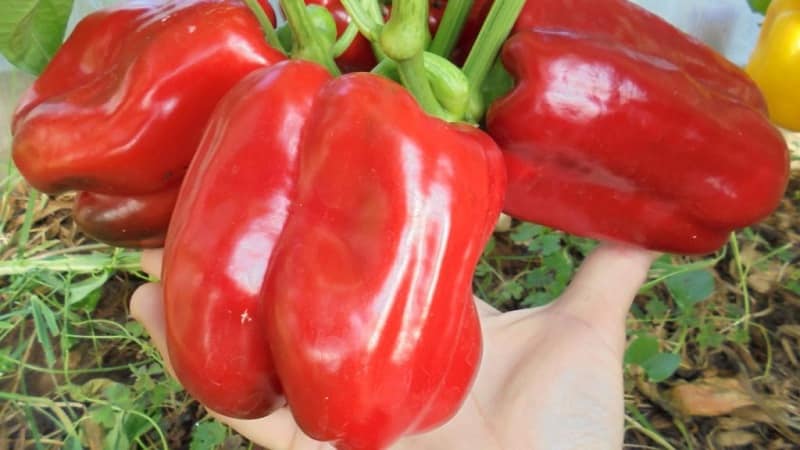
Preparation for cultivation
To fully enjoy the taste and the high yield of this pepper, you need to grow strong seedlings and provide them with proper care.
Soil preparation
It is better to prepare the soil for vegetables in the fall. You will need a mixture of turf soil, peat, humus with the addition of wood ash. 5-7 days before sowing the seeds, the prepared soil is left in a warm room to warm up. The soil is disinfected with a solution of potassium permanganate, a fungicide, and then dried.
Read also:
Pepper “Orange Miracle” and features of its cultivation
Soaking the seeds
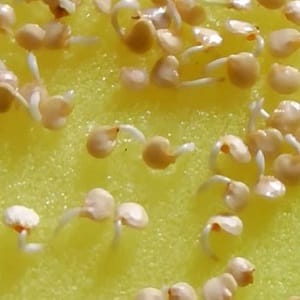 To increase the likelihood of seed germination, they are first treated with growth stimulants. An infusion of nettle prepared in advance is suitable: 1 tbsp. l. Nettle leaves are brewed with a glass of boiling water and infused for 30 minutes. Stimulants such as Zircon and Epin-Extra are also used.
To increase the likelihood of seed germination, they are first treated with growth stimulants. An infusion of nettle prepared in advance is suitable: 1 tbsp. l. Nettle leaves are brewed with a glass of boiling water and infused for 30 minutes. Stimulants such as Zircon and Epin-Extra are also used.
Seeds are soaked to soften the shell and speed up germination. They are placed at a short distance from each other on one piece of damp cloth or foam rubber and covered with another piece. Make sure the fabric is damp and moisten if necessary. After swelling, the seeds are planted in the ground or germinated for subsequent transfer to the soil.
Planting is carried out to a depth of 1-1.5 cm, 2-3 cm apart. The distance between the rows is 15-20 cm. Place 1-2 seeds in cells or cups. The containers are covered with film until shoots appear. From time to time, ventilate and moisten the soil mixture with warm, settled water.
Important! Waterlogging and soil temperatures below +18°C can slow down seed germination.
Germination
The optimal soil temperature for germination is +26…+28°С. To preserve the quality of the seeds, make sure that the substrate is always moist and the temperature does not fall below 16-18 °C. If these conditions are met, seedlings appear in 7-12 days. After this, watering is carried out as the soil dries.
Sprouted peppers are hardenedso that they can safely endure planting in the ground and adapt to temperature changes. To do this, the seedlings are taken outside for several days in a row, gradually increasing the residence time.
Growing seedlings
After germination, the seedlings are transferred in a bright place and maintain a temperature of 16-18 °C, which is increased during the week to 25 °C during the day and 15 °C at night. Normal development of seedlings is ensured with a 12-hour daylight hours and additional lighting in cloudy times.
Important! To avoid rot and death of still immature plants, watering is carried out with warm water once every 1-2 days.
The earth is periodically loosened to a depth of 3-5 cm, excess water is drained from the trays, providing air access to the roots. The first application of fertilizing is carried out after the appearance of 2-3 leaves with a 1% solution of complex fertilizer, then fertilized every 2 weeks.
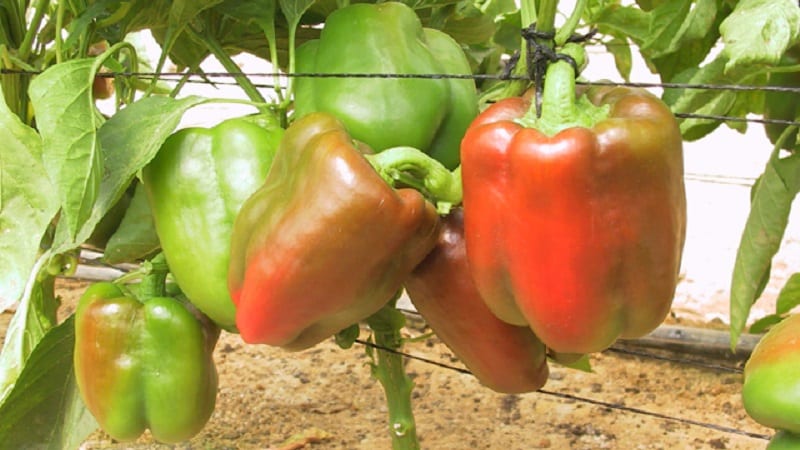
Planting pepper
If the seeds were planted in the ground, 20-30 days after emergence they are plucked by reducing the length of the central root rod by 1 cm. Then the plants are placed in cups or cassettes. If sowing was carried out in cells, they do not dive, but transfer the sprouts into larger pots. Picked sprouts are planted in the ground after 60-70 days, grown in cups - after 50 days.
Bushes ready for planting have 5-8 true leaves, no more than 2 ovaries, plant height is at least 15-20 cm.
Planting occurs when the threat of night frosts has passed., the air temperature will be 16-18 °C, and the soil temperature will be 12-15 °C. Evening time is more suitable, when direct sunlight cannot harm the leaves. The holes are placed at a distance of 40 cm from each other. There should be 4-5 pepper bushes per 1 m². A mixture of humus and wood ash in a 2:1 ratio is placed in each hole, the plant is buried down to the root collar, filled with water and sprinkled with peat.
Further care
The soil is mulched with straw, sawdust or hay after each watering or fertilization. Gently loosen, so as not to damage the root, to a depth of 5-7 cm. Between the rows, the soil is loosened more deeply, at the same time getting rid of weeds. After the roots appear at the bottom of the stem, the bushes are hilled 2-3 times per season.
The strong stem and continuous growth of the bushes make it possible form a bush from the upper stepsons. To do this, the shoots above the second and third leaves are pinched. Subsequently, the bush is pinched, pinched, non-fruit-bearing shoots and lower leaves are removed. To prevent branches from breaking under the weight of growing fruits, they are tied to a support.
Features of cultivation and possible difficulties
 Ombrone pepper is grown only by seedling method. Growing without picking ensures earlier harvest.
Ombrone pepper is grown only by seedling method. Growing without picking ensures earlier harvest.
To obtain healthy seedlings, the main condition is — maintaining optimal requirements. Sweet peppers should not be planted next to bitter ones, otherwise the fruits will be bitter.
Sweet peppers require watering once a week. at moderate air temperatures. If it is hot outside, watering is increased to 2 times a week. The vegetable does not tolerate soil drying out or waterlogging. In the first case, the leaves and ovary fall off, the fruits turn out small and not juicy, in the second, the roots begin to rot due to lack of oxygen.
Attention! Lack of light makes the plant weak and elongated. The hybrid loves loose, light soil rich in organic elements with a neutral pH.
Grows well after carrots, cabbage, beets, pumpkins. Doesn't like being near cucumbers.
After planting in the beds, the bushes are fertilized every 2 weeks, alternating mineral fertilizer with organic fertilizer. As organic matter, litter or manure diluted with water is used in a ratio of 1:10. The soil for peppers must contain sufficient amounts of magnesium and potassium, without chlorine, otherwise the plant will respond with reduced flowering.
Typical diseases and pests
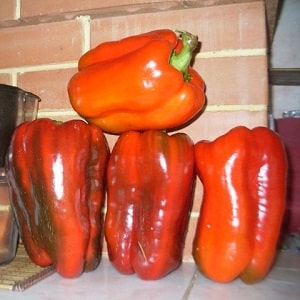 Despite the fact that the sweet pepper hybrid is resistant to major pests and diseases, it is recommended to carry out preventive treatment of bushes with Bordeaux mixture.
Despite the fact that the sweet pepper hybrid is resistant to major pests and diseases, it is recommended to carry out preventive treatment of bushes with Bordeaux mixture.
If the disease cannot be avoided, the plants are treated with systemic fungicides. Infected bushes and their areas are disposed of: they are burned so as not to infect healthy ones.
Save from insects treatment with insecticides and folk remedies:
- onion peel decoction;
- garlic infusion;
- celandine decoction.
Take note:
Delicious and simple recipes for pickled peppers for the winter
Advantages and disadvantages
To the advantages of a hybrid sweet peppers include:
- subject to cultivation conditions, high yield;
- large fruits with excellent taste;
- resistance to pests and diseases;
- fruit set even at low temperatures;
- long shelf life;
- high transportability;
- possibility of consumption in any form (canning, freezing, fresh and processed);
- unpretentiousness in cultivation.
Among the disadvantages — high cost of seed, the need for constant formation of bushes and installation of supports.
Reviews
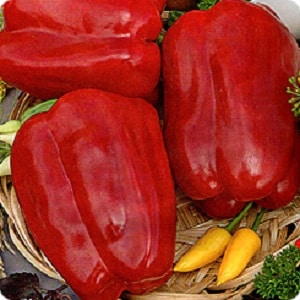 Gardeners note ease of cultivation and high yield hybrid Ombrone.
Gardeners note ease of cultivation and high yield hybrid Ombrone.
Galina, Danilov: “I got 100% seed germination. The seedlings are strong and healthy. Already in August I was picking huge, tasty, juicy and sweet peppers from the bushes. Now I will always plant this particular hybrid in my dacha.”.
Marina, Saratov: “I got acquainted with Ombrone pepper on the Internet, reading reviews and looking at photos. Other summer residents praised it so much that I decided to try growing it myself. It was difficult for me to grow the bushes, loosen them and water them due to my age, but I am happy with the result. I froze and pickled the harvest.”
Conclusion
If you follow the recommendations for growing seeds and provide the plant with the necessary conditions for growth and fruiting, you will get a bountiful harvest of large, sweet, juicy peppers that are suitable for long-term storage, freezing, canning, or will delight you fresh in salads.